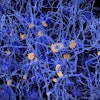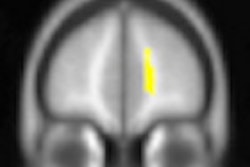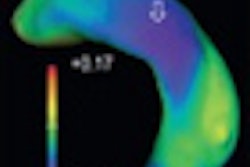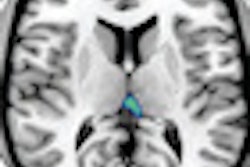Diffusion-tensor MRI (DTI-MRI) is discovering additional brain abnormalities in some U.S. military personnel with mild blast-related traumatic brain injuries that have not been seen with other types of imaging, according to a study published in the New England Journal of Medicine.
Researchers at the Washington University School of Medicine in St. Louis and the Landstuhl Regional Medical Center in Germany performed the study on military personnel evacuated to Landstuhl from Iraq and Afghanistan. DTI-MRI scans of military personnel showed abnormalities in areas of the brain different from those affected in civilians who suffer blunt injuries, they said.
The findings should shed light on the controversial topic of military personnel who suffer traumatic brain injury, also known as concussions, and whether such injuries are due to structural injury to the brain, disruptions in brain chemistry, psychological factors, or a combination of these. Traumatic brain injuries are estimated to have affected as many as 320,000 military personnel in the wars in Iraq and Afghanistan.
DTI-MRI assesses the movement of water in tissue, and changes in the patterns of water movement often are linked to injury or disease. But the significance of the abnormalities seen in the military service personnel is not yet fully understood.
Senior study author Dr. David Brody, an assistant professor of neurology at Washington University, and colleagues evaluated 84 U.S. soldiers evacuated to Landstuhl after exposure to many types of explosive blasts. Abnormalities were found in 18 (28%) of 63 patients diagnosed with mild traumatic brain injury, but not among 21 (33%) soldiers injured in other ways (NEJM, June 2, 2011).
Brain injuries
Military personnel in the study all had blast-related injuries plus other injuries, such as falls, motor vehicle crashes, or being struck by blunt objects. Up to a year after injury, the white-matter abnormalities were still detectible, though their appearance on the scans had changed over time.
Brody emphasizes that mild traumatic brain injury is still a diagnosis based on a history of a head injury that causes unconsciousness, memory loss, confusion, or other disruption in brain function.
A negative MRI scan, even with the advanced methods, does not rule out mild traumatic brain injury, he added. MRI-based methods such as DTI-MRI show great promise, but are not yet ready to be used in routine clinical practice.
Brody said he believes the approach used in the study may prove helpful in military and civilian contexts, and in children and adults.
In addition, lead study author Christine Mac Donald, PhD, a research instructor in neurology at Washington University, said more research must be done to fully understand whether abnormalities detected by DTI-MRI represent significant damage to the brain white matter. The issue is how this damage affects attention, memory, emotional regulation, balance, coordination, sleep, and other functions.
Likewise, she added, the relationship between mild traumatic brain injury and post-traumatic stress disorder is especially important. The researchers' ongoing studies hope to answer some of those questions.
The research was supported by funding from the U.S. Department of Defense's Congressionally Directed Medical Research Program and the U.S. National Institutes of Health (NIH).


.fFmgij6Hin.png?auto=compress%2Cformat&fit=crop&h=100&q=70&w=100)





.fFmgij6Hin.png?auto=compress%2Cformat&fit=crop&h=167&q=70&w=250)











